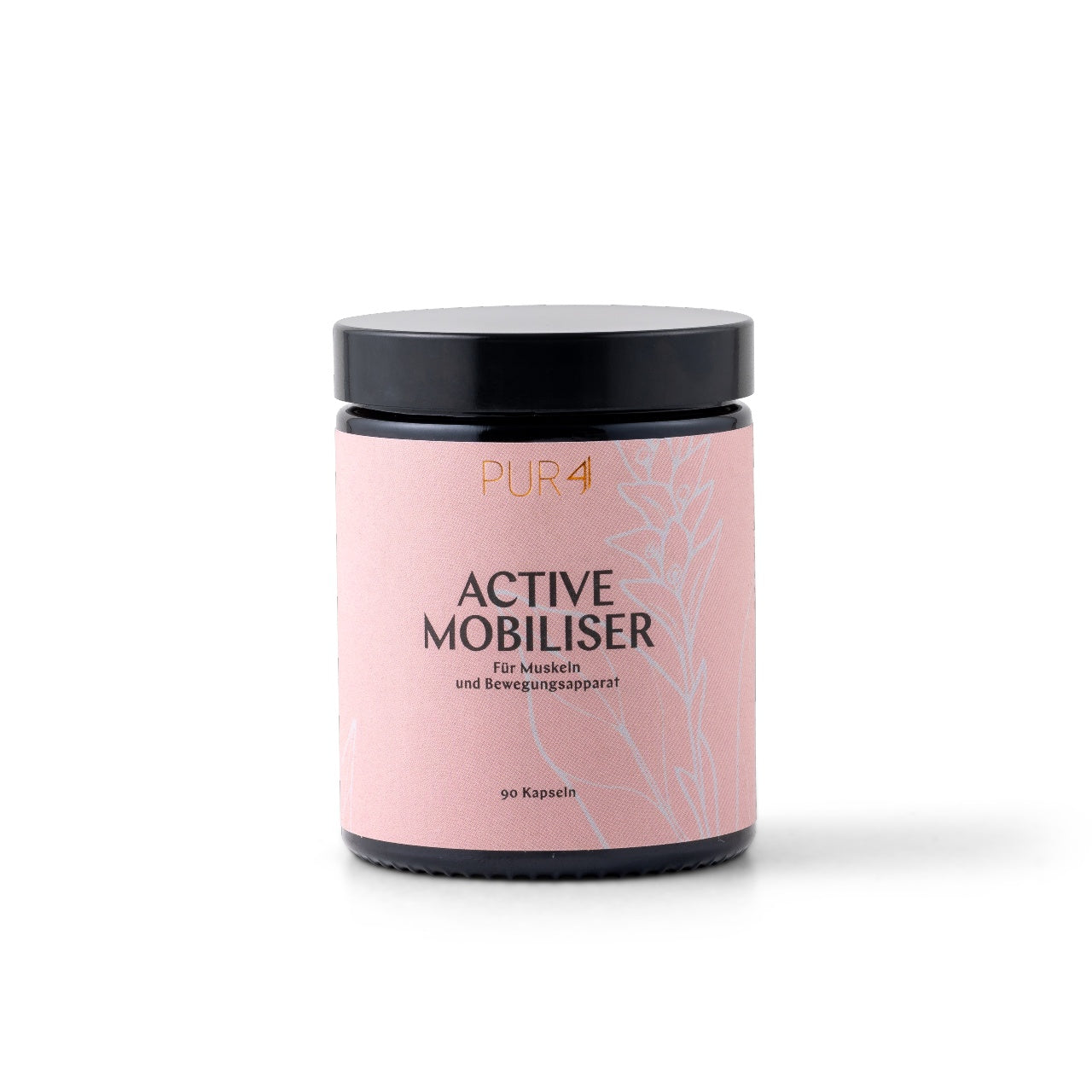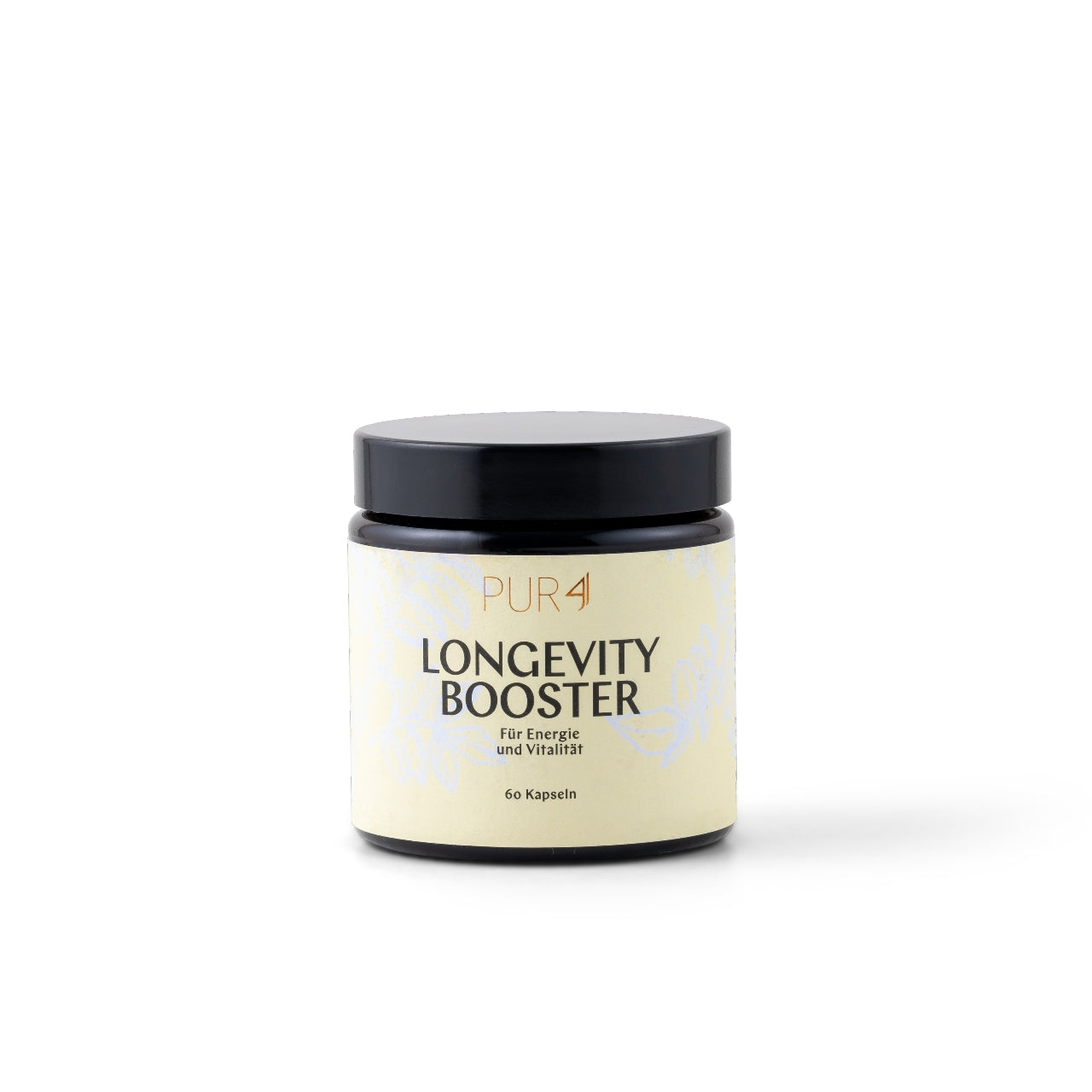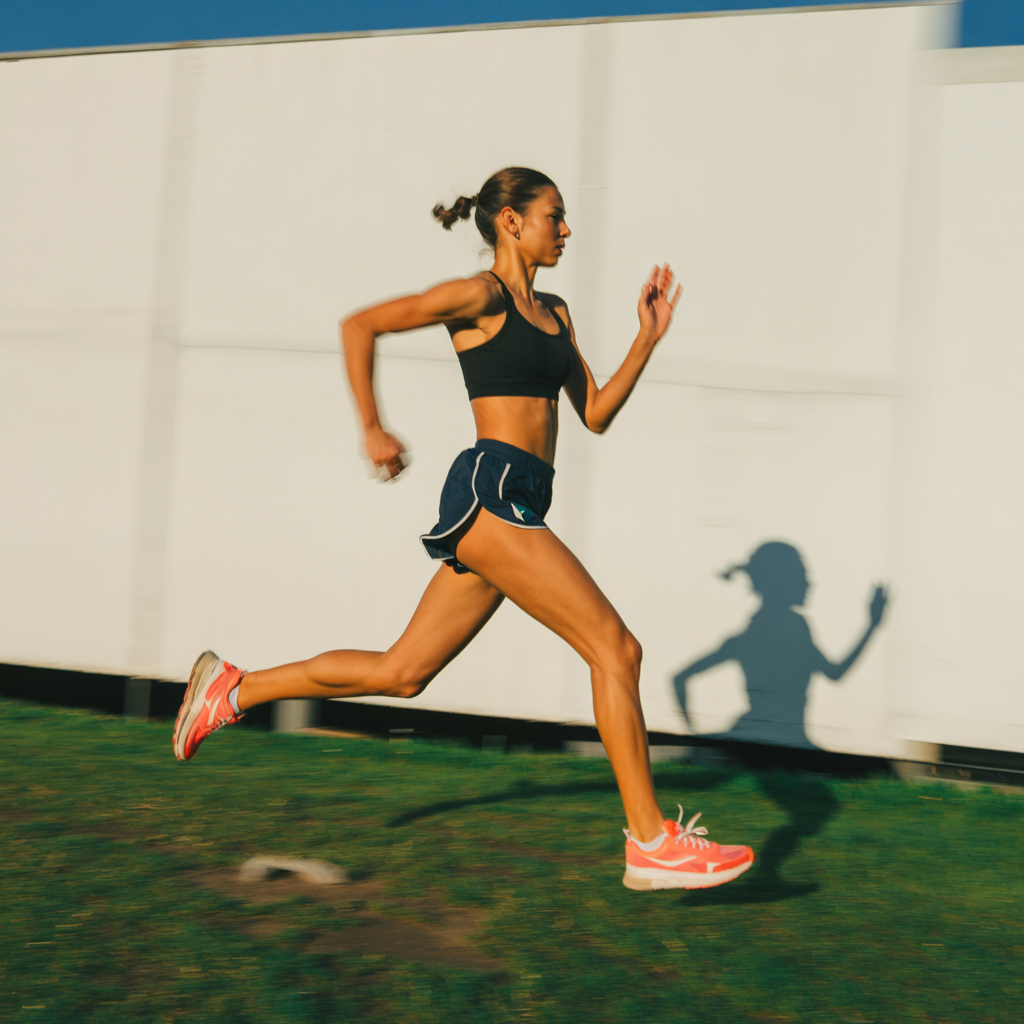
What influence does exercise have on longevity?
Exercise is healthy. There's no doubt about that these days. But does exercise also help improve overall quality of life and extend life expectancy? That would be only logical. Below, we'll examine whether exercise has a positive effect on longevity, and how.
|
The most important things in brief:
|
Table of contents
- Exercise vs. cardiovascular disease
- Exercise vs. chronic diseases
- Movement for cell health
- Movement for Alzheimer's prevention
- Exercise vs. Depression
- Resistance training to maintain muscle mass
- Movement for higher life expectancy
Longevity: Exercise vs. cardiovascular disease
|
Cardiovascular health is crucial for longevity, as more than a third of deaths in Germany in 2023 will be due to cardiovascular disease. A study shows that regular physical activity, especially vigorous exercise, reduces the risk of cardiovascular disease. |
Cardiovascular health is arguably the most important starting point when it comes to increasing life expectancy. The following statistics on the most common causes of death in Germany in 2023 show why.
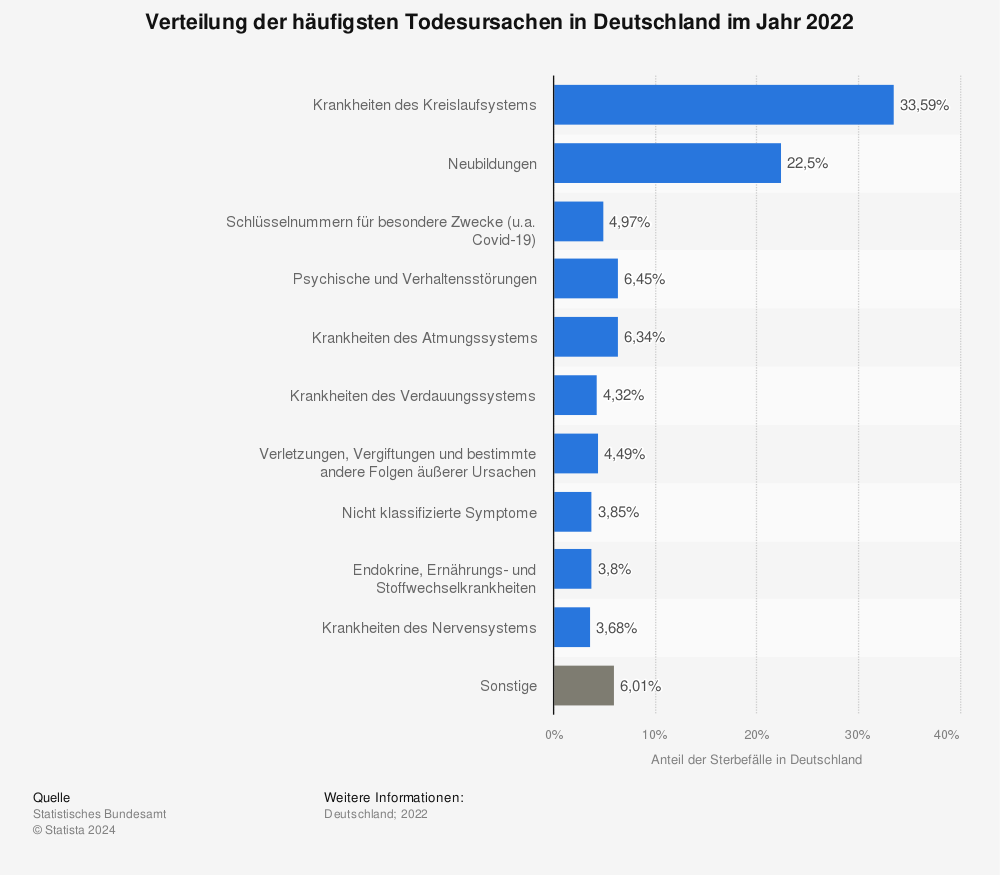
According to the study, more than one in three deaths in 2023 was due to cardiovascular disease.
One important starting point for improving vascular health: exercise. This is the conclusion of a study of 7,881 men and women published in the European Heart Journal in 2011. The findings:
- CVD risk decreased depending on the physical activity groups according to current recommendations (at least 30 minutes of moderate activity five times a week or vigorous activity three times a week)
- The lowest CVD risk was found in participants who met the recommendations by engaging in vigorous exercise
- Physical activity below the guidelines also provided protection
Source:
Hamer, M., & Stamatakis, E. (2011). Physical activity and risk of cardiovascular disease: a systematic review and meta-analysis. European Heart Journal, 32(9), 1080-1089.
Longevity: Exercise vs. Chronic Diseases
|
With increasing age, the risk of chronic diseases increases, which impair both life expectancy and quality of life. A 2006 study shows that regular physical activity is effective in combating many chronic diseases, such as cardiovascular disease, diabetes, and cancer, and improves health. |
With increasing age, the likelihood of chronic diseases increases. These, in turn, are not only often associated with a lower life expectancy – they also generally reduce quality of life. Precisely what we don't want when striving for longevity.
This affects the majority of Germans over 60. Among men, 60 percent of respondents are affected, and among women, even 66 percent.
What helps against chronic diseases? According to a 2006 study, exercise is one of the most effective ways to combat them. The meta-analysis shows "that there is irrefutable evidence for the effectiveness of regular physical activity in the primary and secondary prevention of various chronic diseases [...] and premature death." These chronic diseases include:
- Cardiovascular diseases
- diabetes
- Cancer
- high blood pressure
- Obesity
- depression
- osteoporosis
Furthermore, the study authors suspect that there is a linear relationship between physical activity and health status. Meaning: the more exercise, the healthier.
Source:
Warburton DE, Nicol CW, Bredin SS. Health benefits of physical activity: the evidence. CMAJ. 2006 Mar 14;174(6):801-9. doi: 10.1503/cmaj.051351. PMID: 16534088; PMCID: PMC1402378.
Longevity: Movement for Cell Health
|
Cell health is crucial for life expectancy and quality of life, as it influences all bodily processes. A 2017 US study shows that intense physical activity improves cell health and can reduce the biological age of cells by up to 9 years. |
Cell health is a cornerstone of longevity. Cells are the smallest functional unit in the human body and thus involved in all processes. Conversely, the smooth functioning of these processes, and thus, logically, life expectancy and quality of life, the two overarching longevity goals, depend significantly on cell health.
Can cellular health be influenced by exercise? Yes, says a 2017 US study. Researchers examined the leukocyte telomere length of 5,823 adults in the US and compared this to the subjects' physical activity—both in terms of quantity and quality. The findings:
- Adults with high activity were estimated to have a biological aging advantage of 9 years at the cellular level compared to sedentary adults
- The difference in cell aging between high and low activity individuals was also significant at 8.8 years
- Even between people with high and moderate activity, the difference was still significant at 7.1 years
According to the study, physical activity has a major impact on telomere length and thus also on cell health in adults.
Source:
Tucker LA. Physical activity and telomere length in US men and women: An NHANES investigation. Prev Med. 2017 Jul;100:145-151. doi: 10.1016/j.ypmed.2017.04.027. Epub 2017 Apr 24. PMID: 28450121.
Longevity: Movement for Alzheimer's Prevention
|
Around 7 percent of people over 60 in Germany suffer from dementia, with two-thirds suffering from Alzheimer's disease, which can significantly impair life expectancy and quality of life. A 2017 meta-study shows that physical activity, especially during leisure time, can reduce the risk of Alzheimer's disease. |
Around 7 percent of people over 60 in Germany suffer from dementia (as of 2022) – two-thirds of them from Alzheimer's disease. A disease that often not only reduces life expectancy but also dramatically worsens quality of life over its course. And the risk of developing Alzheimer's disease is increasing, as this study from the USA shows.
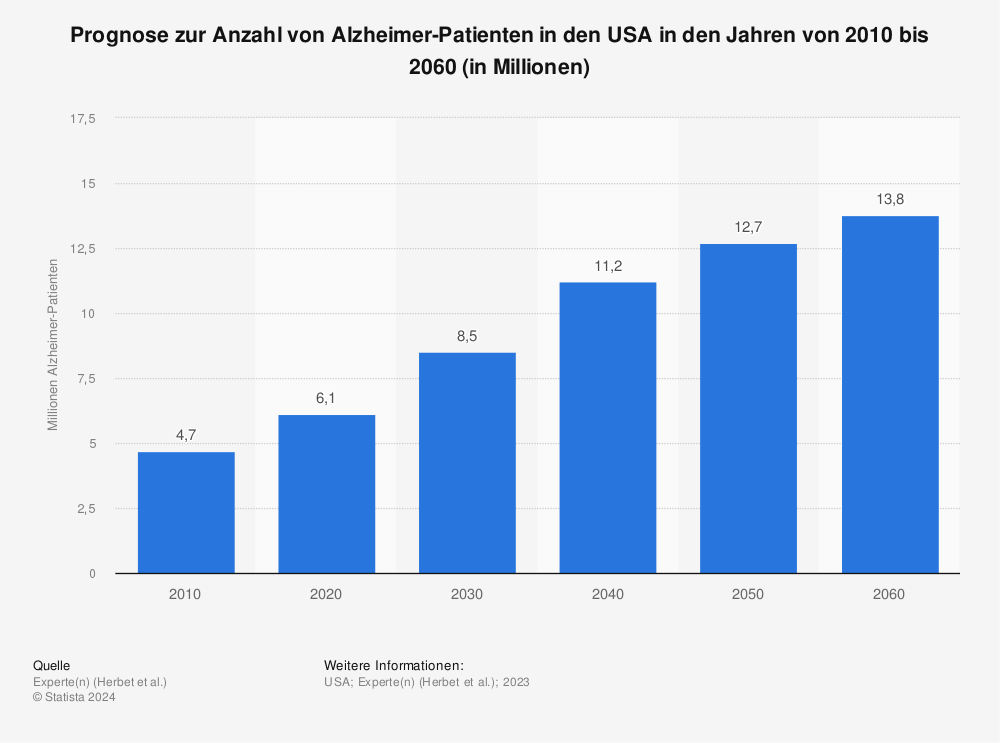
Those who aim for longevity therefore want to avoid dementias like Alzheimer's at all costs. And here, too, exercise plays a significant role. A 2017 meta-study that evaluated 24 existing studies on the connection between Alzheimer's and exercise came to the following conclusion:
- Most studies have found an inverse relationship between physical activity and Alzheimer's risk. Meaning, the more activity, the lower the risk.
- Leisure-time physical activity was particularly protective against Alzheimer’s disease
- Physical activity at work was not protective against Alzheimer’s disease
Exercise does seem to have a positive effect on Alzheimer's disease prevention, but only if it occurs during leisure time and not as part of work.
Source:
Stephen R, Hongisto K, Solomon A, Lönnroos E. Physical Activity and Alzheimer's Disease: A Systematic Review. J Gerontol A Biol Sci Med Sci. 2017 Jun 1;72(6):733-739. doi: 10.1093/gerona/glw251. PMID: 28049634.
Longevity: Exercise vs. Depression
|
Depression reduces quality of life and can reduce life expectancy by about 10 years. A 2015 meta-study shows that physical activity can alleviate depressive symptoms and reduce anxiety, even in non-clinical sufferers. |
Around 28 percent of Germans say they have acquaintances in their circle of friends who suffer from depression. This is according to a 2024 survey by the German Depression Support and Suicide Prevention Foundation. This is hardly surprising, considering the causes of sick days in 2023.

It's obvious that the quality of life of those affected significantly declines. According to Ulrich Hegerl of the German Depression Help Foundation, the same applies to life expectancy, which is around 10 years lower. Therefore, those who want longevity should avoid depression at all costs. One possible starting point: exercise.
The therapeutic benefits of physical activity have long been recognized in clinical treatment. But can physical activity also help non-clinical patients? A 2015 meta-study examined precisely this. The finding:
- Physical activity reduced depression by a medium effect
- Physical activity reduced anxiety by a small effect
- Even though the study does not show that physical activity is a panacea for non-clinical depression, a positive effect cannot be denied.
Source:
Rebar AL, Stanton R, Geard D, Short C, Duncan MJ, Vandelanotte C. A meta-meta-analysis of the effect of physical activity on depression and anxiety in non-clinical adult populations. Health Psychol Rev. 2015;9(3):366-78. doi: 10.1080/17437199.2015.1022901. Epub 2015 Jul 3. PMID: 25739893.
Longevity: Exercise to maintain muscle mass
|
From the age of 55 onwards, people increasingly lose muscle strength, which impairs mobility and quality of life, especially after the age of 70. Studies show that resistance training in older adults improves both muscle mass and quality, increases strength, and facilitates daily tasks, making it an important intervention against the effects of sarcopenia. |
From the age of 55, a person loses 15 percent of their muscle strength per decade. This rate accelerates to 30 percent after the age of 70 (Pieber, K. Age-associated changes in the muscles. Manual Medicine 49, 469–470 (2011). This loss of skeletal muscle mass is associated with massive limitations in the quality and safety of movement, resulting in limitations in coping with everyday life. This naturally leads to a drastic reduction in quality of life in old age—in other words, anything but longevity.
According to Pieber, K., one cause of this so-called age-related sarcopenia is physical inactivity. So, more exercise, more longevity, more muscle mass? Hunter GR, McCarthy JP, and Bamman MM investigated this. The results of their study:
- Strength and muscle mass increase in older adults following resistance training through a poorly understood sequence of events that appears to involve the recruitment of satellite cells to support hypertrophy of mature myofibers.
- Muscle quality (strength relative to muscle mass) also increases in older adults with resistance training, possibly for several reasons, such as the increased capacity for neuronal activation of motor units and the increased availability of energy-rich phosphate.
- Resistance training in older adults also increases strength, reduces the difficulty of performing daily tasks, improves energy expenditure and body composition, and promotes participation in spontaneous physical activities.
- Impairment of strength development may occur when aerobic training is combined with strength training, but can be avoided if training is limited to 3 days per week.
Sources:
Our little helpers
Given that bones and joints, as well as hormonal causes, are responsible for age-related sarcopenia, we have created nutritional supplements that target precisely these areas.
Longevity: Exercise for better sleep
|
Studies show that poor sleep increases the risk of accelerated brain aging and impairs quality of life in old age. Exercise can improve sleep quality, but the positive effects depend on factors such as age, gender, and type of activity, so further research is needed to develop targeted therapeutic approaches. |
Researchers at the University of California, San Francisco, have shown that people in their 30s and 40s who sleep poorly have an increased risk of accelerated brain aging—a condition that is guaranteed to negatively impact quality of life in old age.
So we need good, restful sleep for maximum longevity. And many people are already actively working to improve their sleep quality.
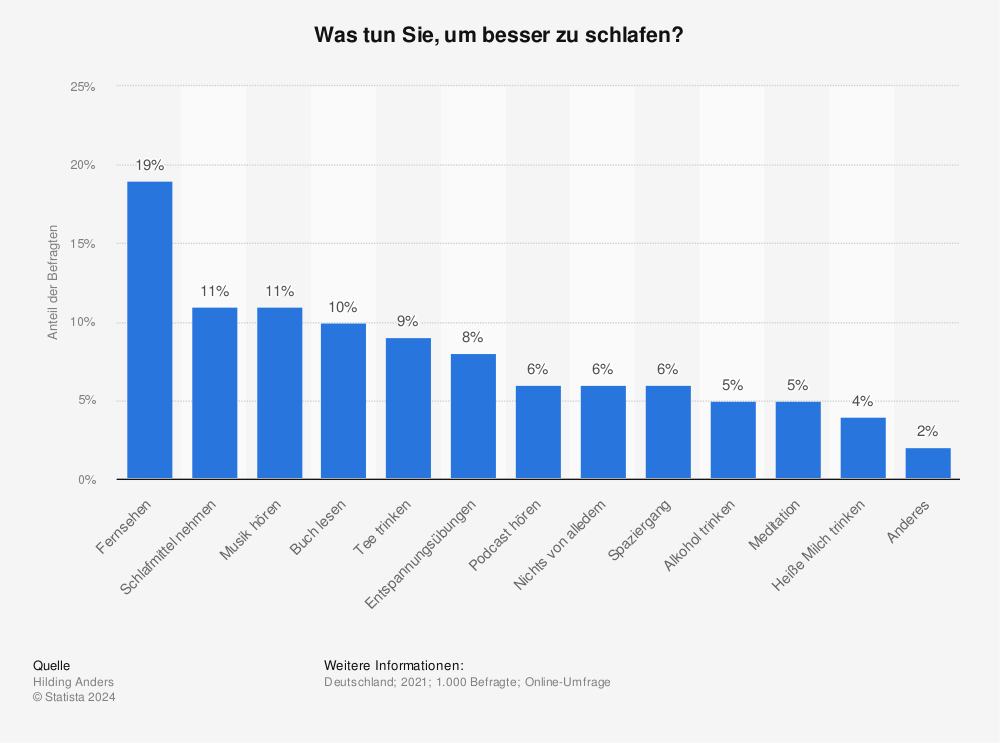
You can find more statistics at Statista
But what really helps? Can exercise also help? This is the question addressed by Kredlow MA, Capozzoli MC, Hearon BA, Calkins AW, and Otto MW in their meta-analysis "The effects of physical activity on sleep: a meta-analytic review." The results:
- Acute and regular exercise usually has small to moderate positive effects on various sleep parameters, such as total sleep time, sleep efficiency and sleep quality.
- Effects vary by gender, age, baseline activity level, type of exercise, time of day, duration, and adherence; no significant moderation by exercise intensity or aerobic/anaerobic distinction.
- Research gaps and clinical relevance: There is a need for further systematic research and application of these findings in the treatment of insomnia.
Sources:
- University of California San Francisco: "Poor Sleep in Midlife Is Linked to Faster Brain Atrophy" (October 23, 2024)
- Kredlow MA, Capozzoli MC, Hearon BA, Calkins AW, Otto MW. The effects of physical activity on sleep: a meta-analytic review. J Behav Med. 2015 Jun;38(3):427-49. doi: 10.1007/s10865-015-9617-6. Epub 2015 Jan 18. PMID: 25596964.
Movement for higher life expectancy
|
Physical activity can increase life expectancy by reducing the risk of chronic diseases such as heart disease, diabetes and cancer, delaying mortality and reducing the risk of early death by improving cardiovascular health and metabolic functions. |
Many of the most common causes of death in Germany should be preventable or at least delayed through exercise, right? For example, the most common cause of death, cardiovascular disease.
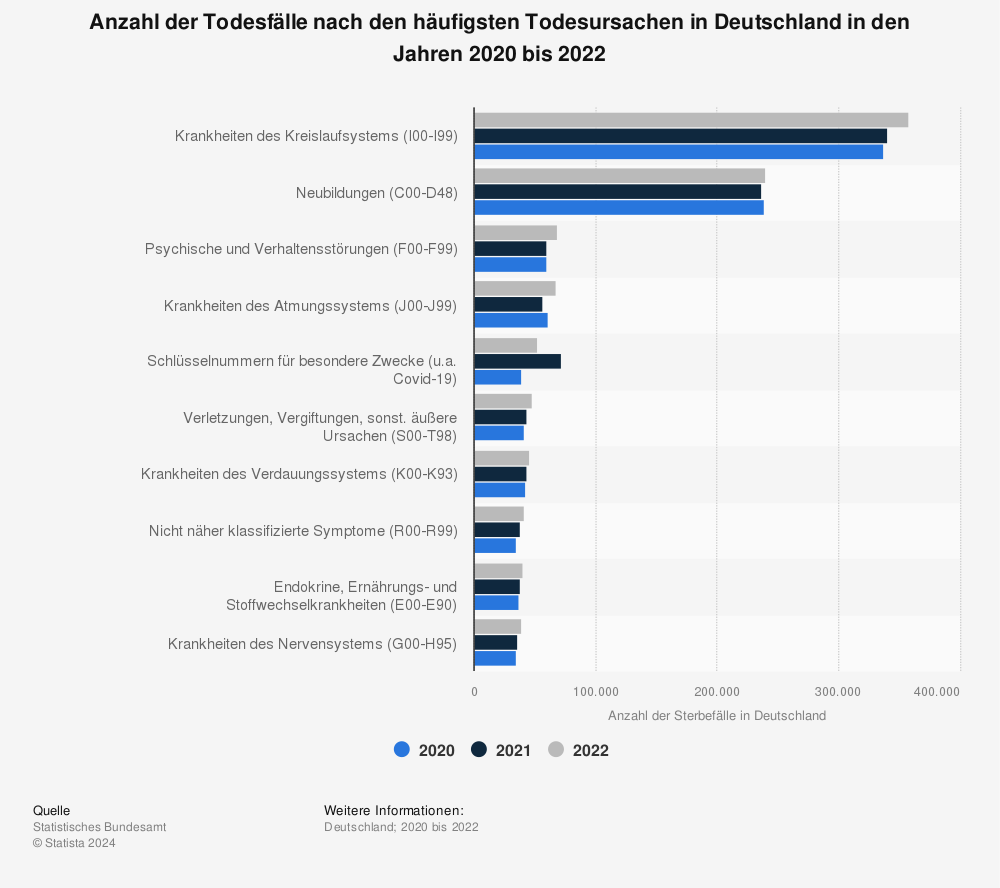
But is that really true? Can exercise increase overall life expectancy? Lee, IM, Paffenbarger, RS & Hennekens, CH examined this in their meta-study "Physical activity, physical fitness and longevity." Their findings:
- Physical activity reduces the risk of many chronic diseases such as coronary heart disease, high blood pressure, diabetes, cancers and osteoporosis.
- Physical activity delays mortality and increases life expectancy: Studies show that physical fitness is associated with lower overall mortality. Regular exercise activates biological processes that reduce the risk of early death, for example, by improving cardiovascular health and metabolic functions.
Source:
Lee, IM, Paffenbarger, RS & Hennekens, CH Physical activity, physical fitness and longevity. Aging Clin Exp Res 9, 2–11 (1997). https://doi.org/10.1007/BF03340123

